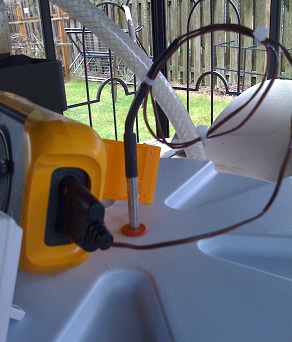Arkador
Well-Known Member
I want to add a Bilchman Brewmometer to my 10 gallon Gatorade (Rubbermaid) cooler.
I got the cooler used, so there is already a hole which appears to be about 1/2 inch in the center front of the cooler. I am concerened that the weldless brewmometer does not have enough threads to span the thickness of the cooler. Do I need to add a bulkhead to the cooler to add either the 1/2inch NPT or weldless version of the Bilchman Brewmometer?
Weldless Brewmometer

1/2 Inch NPT Brewmometer

Bulkhead

I have read THIS thread, but want something a little more professional
Just read https://www.homebrewtalk.com/f11/remote-probe-thermometer-wort-proofing-26905/
And will concider this method, after seeing some of the issues with the probe thermometers in the wall of a cooler..... What is the best way to close the hole in the side of the cooler?
I got the cooler used, so there is already a hole which appears to be about 1/2 inch in the center front of the cooler. I am concerened that the weldless brewmometer does not have enough threads to span the thickness of the cooler. Do I need to add a bulkhead to the cooler to add either the 1/2inch NPT or weldless version of the Bilchman Brewmometer?
Weldless Brewmometer

1/2 Inch NPT Brewmometer

Bulkhead

I have read THIS thread, but want something a little more professional
Just read https://www.homebrewtalk.com/f11/remote-probe-thermometer-wort-proofing-26905/
And will concider this method, after seeing some of the issues with the probe thermometers in the wall of a cooler..... What is the best way to close the hole in the side of the cooler?





